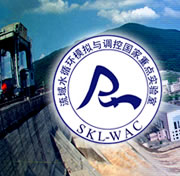Enhanced coagulation for high alkalinity and micro-polluted water: The third way through coagulant optimization Authors:Mingquan Yana,b, Dongsheng Wangb, Jiuhui Qub, Jinren Nia, Christopher W.K. Chowc
Department: a Department of Environmental Engineering, College of Environmental Science and Technology, The Key Laboratory of Water and Sediment Sciences, MOE, Peking University, Beijing 100871, China
b State Key Laboratory of Environmental Aquatic Chemistry, Research Center for Eco-Environmental Sciences, CAS, P.O. Box 2871, Beijing 100085, China
c CRC for Water Quality and Treatment, Australian Water Quality Centre, SA Water, Private Mail Bag 3, Salisbury, South Australia 5108, Australia
Journal:Water Research
Volumes:42
Issues :8-9
Date:April 2008
Page number:2278-2286
Keywords: Alkalinity; Coagulant aid; Composite polyaluminum chloride (HPAC); Enhanced coagulation ; Natural organic matter (NOM)
Abstract :
Conventional coagulation is not an effective treatment option to remove natural organic matter (NOM) in water with high alkalinity/pH. For this type of water, enhanced coagulation is currently proposed as one of the available treatment options and is implemented by acidifying the raw water and applying increased doses of hydrolyzing coagulants. Both of these methods have some disadvantages such as increasing the corrosive tendency of water and increasing cost of treatment. In this paper, an improved version of enhanced coagulation through coagulant optimization to treat this kind of water is demonstrated. A novel coagulant, a composite polyaluminum chloride (HPAC), was developed with both the advantages of polyaluminum chloride (PACl) and the additive coagulant aids: PACl contains significant amounts of highly charged and stable polynuclear aluminum hydrolysis products, which is less affected by the pH of the raw water than traditional coagulants (alum and ferric salts); the additives can enhance both the charge neutralization and bridging abilities of PACl. HPAC exhibited 30% more efficiency than alum and ferric salts in dissolved organic carbon (DOC) removal and was very effective in turbidity removal. This result was confirmed by pilot-scale testing, where particles and organic matter were removed synergistically with HPAC as coagulant by sequential water treatment steps including pre-ozonation, coagulation, flotation and sand filtration.
《水研究》刊登“高碱度微污染水强化混凝处理的第三种方式通过混凝剂优化”
作者: Mingquan Yana,b, Dongsheng Wangb, Jiuhui Qub, Jinren Nia, Christopher W.K. Chowc
刊物:水研究杂志
卷号:42
期刊号:8-9
时间:2008年4月
页码:2278-2286
关键词: 碱度;助凝剂;复合聚合氯化铝(HPAC);强化混凝; 天然有机物(NOM)
摘要:
常规混凝剂并不能有效地去除具有较高碱度或pH值水中的天然有机物(NOM)。对于这一类型的水,强化混凝是目前提出的有效的措施之一,已经通过酸化原水、提高混凝剂水解量的方式投入应用。这两种方法都有一些缺点,例如:增加了水的腐蚀趋势、提高了处理成本。本文中强化混凝剂的改进体系被证明通过混凝剂优化来处理这种水。一种新型具有超越聚合氯化铝(PACl)优势和添加助凝剂的复合聚合氯化铝(HPAC)被开发。PACl具有许多显著高价态、稳定多核铝的水解产物,与传统混凝剂(明矾和铁盐)相比被pH值影响较小,同时添加剂可以提高电荷中和与PACl桥接能力。HPAC展现出对溶解有机碳(DOC)超过明矾和铁盐超过30%有效去除率,并且对浊度的去除也非常有效。这个结论已经被中试规模测试所证实,包括臭氧预氧化,混凝,气浮,砂滤的连续水处理措施协助以HPAC作为絮凝剂对颗粒物和有机物被去除 。

